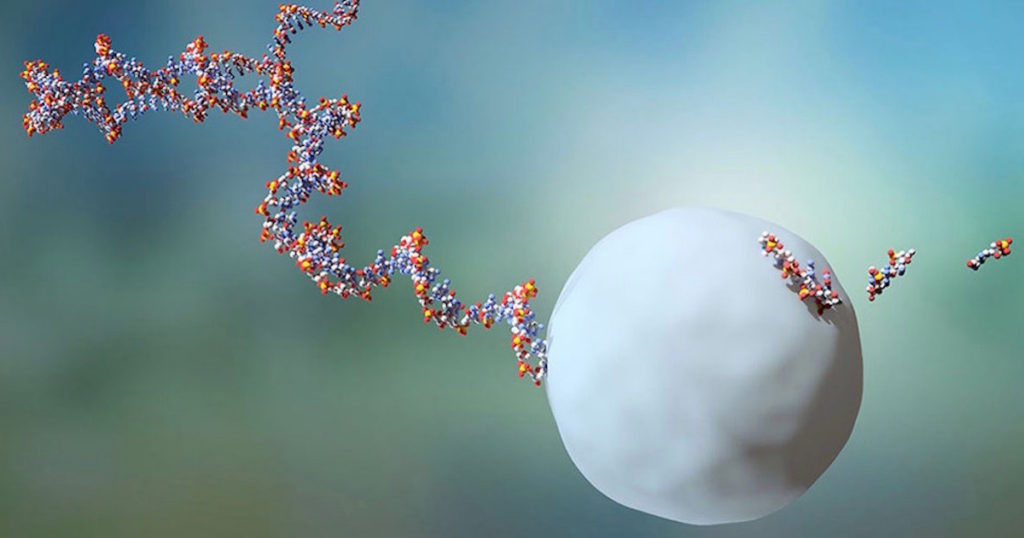Making ribosomes in human cells
The assembly of the human ribosome requires a vast number of assembly factors that first form a giant precursor of the ribosomal small subunit (SSU), the SSU processome. Singh et al. provide new insights into human ribosome assembly by using cryo–electron microscopy, x-ray crystallography, and functional studies to reveal the structures of the human SSU processome as it matures in the nucleolus. This study reveals the tightly controlled molecular choreography by which an ensemble of assembly factors controls early irreversible maturation steps that bring about the formation of the human SSU. —DJ
Structured Abstract
INTRODUCTION
The ribosome catalyzes protein synthesis in all cells by coupling the decoding of messenger RNA by the small ribosomal subunit with peptide bond formation by the large ribosomal subunit. As both subunits are composed of ribosomal RNA and ribosomal proteins, the assembly of these molecular machines is tightly controlled. In human cells, more than 200 ribosome assembly factors catalyze the maturation of both ribosomal subunits. Ribosome assembly is initiated in the nucleolus, a biomolecular condensate formed through multivalent protein–nucleic acid interactions. Inside this biomolecular condensate, the first stable eukaryotic ribosome assembly intermediate of the small subunit, the small subunit (SSU) processome, is formed. Within the SSU processome, more than 70 proteins and an RNA chaperone, the small nucleolar RNA (snoRNA) U3, work in concert to bring about RNA folding, modifications, rearrangements, and cleavage as well as targeted degradation of preribosomal RNA by the RNA exosome. The essential nature of this process is highlighted by mutations in ribosomal proteins and ribosome assembly factors that have been associated with human diseases.







